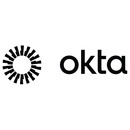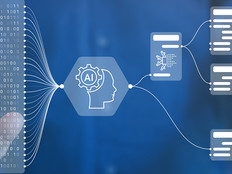Federal IT leaders want to make it easier for agencies to incorporate artificial intelligence such as chatbots and image and code generators into daily workflows, as well as compliance tools that help protect sensitive data and users’ personal information.
Both the Federal Risk and Authorization Management Program, or FedRAMP, and the Office of Management and Budget released guidance in recent weeks on steps the government can take, or has already taken, to accelerate adoption of these capabilities.
FedRAMP issued draft guidance on Jan. 26 establishing a framework for prioritizing authorization of emerging technologies. Specifically, FedRAMP hopes to fast-track approvals for AI applications in three areas: chat interfaces, code generators and debugging tools, and image generators.
“It’s awesome that they’re getting ahead of it,” says Sean Frazier, federal chief security officer for identity and access management company Okta. “These are all positive things. You can always think that the government doesn't move fast enough, because a lot of people believe it doesn’t, but this is one example where people are trying.”
Click on the banner to learn how platform engineering works.
Federal Spending Is Up on Artificial Intelligence
OMB announced a policy on March 28 that calls for IT leaders to take a series of actions, including asking agencies to designate chief AI officers and take broad steps to expand transparency in how the government is using AI.
The moves come in response to President Joe Biden’s executive order on AI from October 2023, which laid out an urgent and governmentwide approach to coordinating adoption of the technology.
Agencies are already moving quickly.
The government spent more than $3.3 billion on AI in fiscal year 2022, according to the 2023 AI Index Report from Stanford University’s Institute for Human-Centered Artificial Intelligence. That’s up nearly $600 million from a year earlier.
In addition, according to Okta’s 2024 “Business at Work” report, “The government sector stands out for increasing app deployment in multiple categories at a higher-than-average rate.”
In particular, the company found, compliance tools were among the most popular new applications in 2023. Okta noted a 120 percent year-over-year growth in organizations deploying data compliance tools over the past two years.
Using AI to Handle Log Data
“Organizations must navigate an increasingly complex and ever-evolving regulatory landscape,” the report notes. “We also see a possible connection to the wide-scale deployment of automation and AI tools, which generate exponentially large volumes of data.”
Frazier says that agency IT teams are drowning in log data detailing which users accessed which apps and which information.
DISCOVER: Data readiness is essential for effective artificial intelligence deployment.
With emerging technologies, officials can use AI to help determine which pieces of data users can and should have access to based on their classification levels, Frazier says.
“This is an area where AI can help immensely,” he says. “What happens if someone onboards, I provision all of these applications, they leave, and those applications are still provisioned? I don’t know that they’re there, but the threat actors know that they’re there and are taking advantage of that.”











